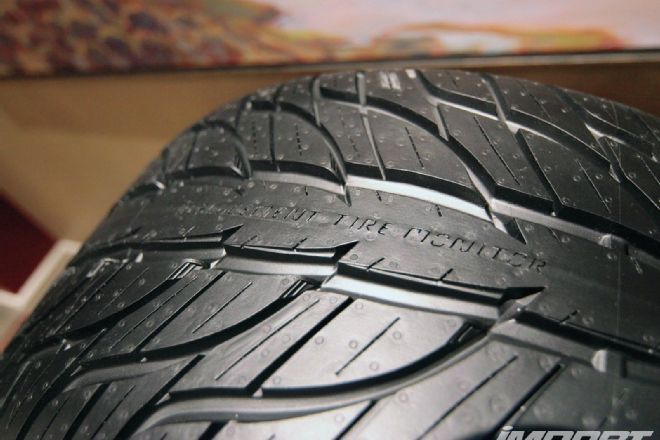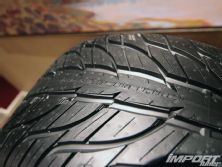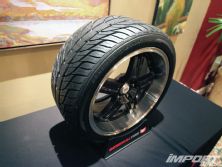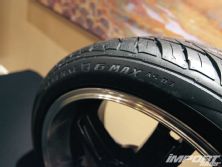Let’s be honest: When it comes to buying parts, few are more uninspiring than street tires. Oil filters might be one. Windshield wiper blade refills another. Engine swaps and aftermarket turbo systems: cool enough to make you happy to spend an arm and a leg on one. Even something seemingly mundane, like a performance clutch, is cool if for no other reason than how it lets you chirp gears like a boss or clutch-kick into sweeping, smoky drifts (yes, those things will always be cool). But when it comes to selecting and buying street tires, the decision usually follows the same thought process as insurance, registration renewals, or gasoline—whatever gets the job done and costs the least.
 |
General Tire G–Max
|
General Tire G–Max
Which is curiously backward, since, as the only part of a car that actually contacts the driving surface, tires are arguably the most important. We all know how well an all-season tire handles on wet roads, lasts long, and costs the least. But as performance car builders, if there’s anything we look forward to in a new set of tires, it’s the dry-traction dominance of sticky, barely DOT-legal UHP radials. Too bad there’s not a compromise between the two, right? General Tire would argue there is: the all-new G-Max AS-03.
The G-Max has deep treads and a 480 UTQG rating—great for long life, but don’t let this fool you into thinking it comes up short in the traction department. Notice those two staggered grooves running down its center. They were designed to grip and hold snow to provide better winter traction, since snow naturally grips other snow better than rubber can by itself. The interesting side benefit of this staggered design is that it keeps more rubber on the ground at all times. And those little slits you see in each tread block—called “sipes”—are also necessary for traction in wet and snowy conditions. But where these unfortunately weaken the tread blocks of other tires and elevate power-robbing friction, the ones in the G-Max feature contrasting nubs inside that lock together under load to increase rigidity, as if the blocks were solid. Even better, the treads themselves taper from bottom to top to give the blocks even more stability.
 |
General Tire G–Max
|
General Tire G–Max
But two of the coolest features are two of the simplest. You’ll notice the words “replacement tire monitor” running down the center of the G-Max’s tread. As the tire wears to the point where it should be replaced, this changes to “replace tire.” And that odd-looking box protruding from the edge of the tread, visible in the red image above: There is actually one on each side of the tire that helps you identify alignment problems, depending on how it wears in relation to the other.
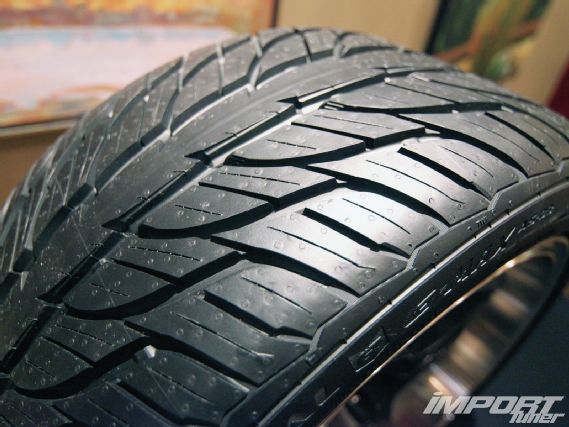 |
General Tire G–Max
|
General Tire G–Max
But the real reason you should be interested in all of this: We personally flogged the crap out of G-Max-clad EVO Xs, Audi A5s and TTs, Mustang GTs, and Chevy Camaros at a recent Infineon Raceway full-day test session—around the famed Le Mans circuit, and through wet and dry autocross courses, under the instruction of Formula D/WRC pros like Stephan Verdier. We can attest to their claimed performance benefits as well as a few more: ridiculously long tread life and consistent heating characteristics. Plus, we hear their MSRP is far below those barely legal UHPs you’ve been eyeing up—three of the most important features to the budget-bound, gear-chirping, clutch-kicking, performance car builder in all of us.

